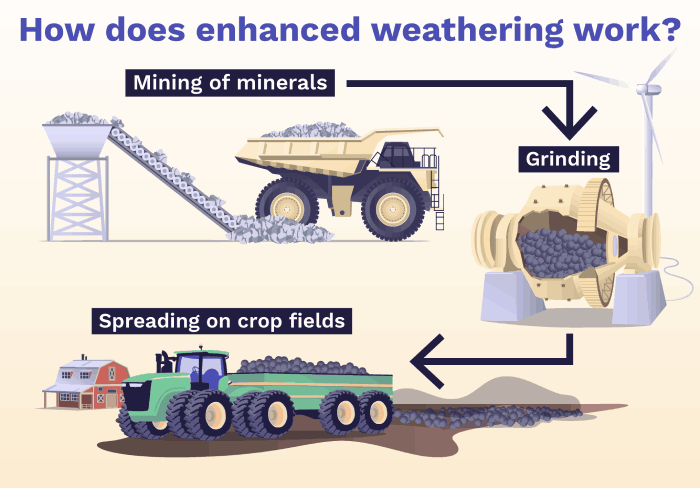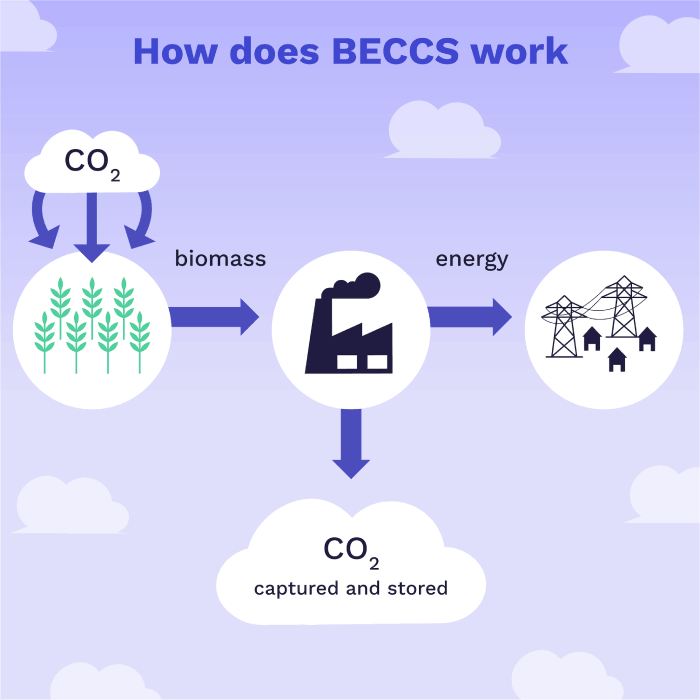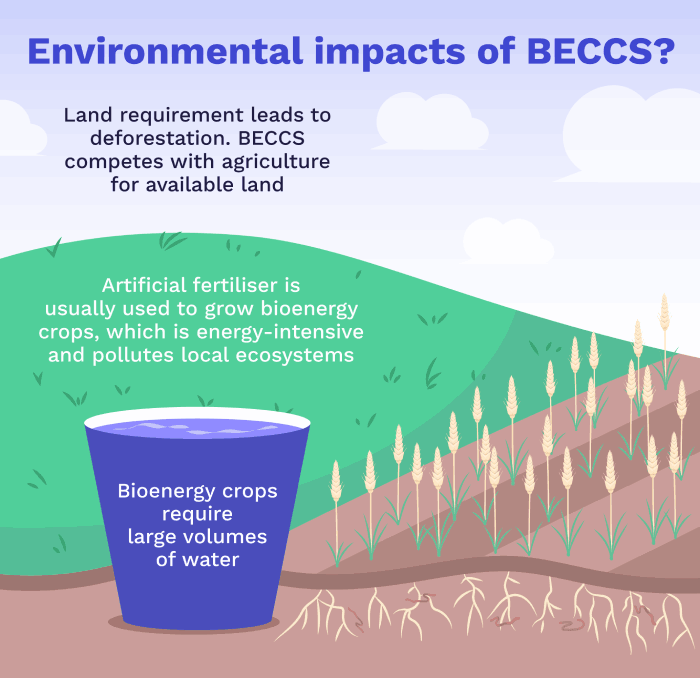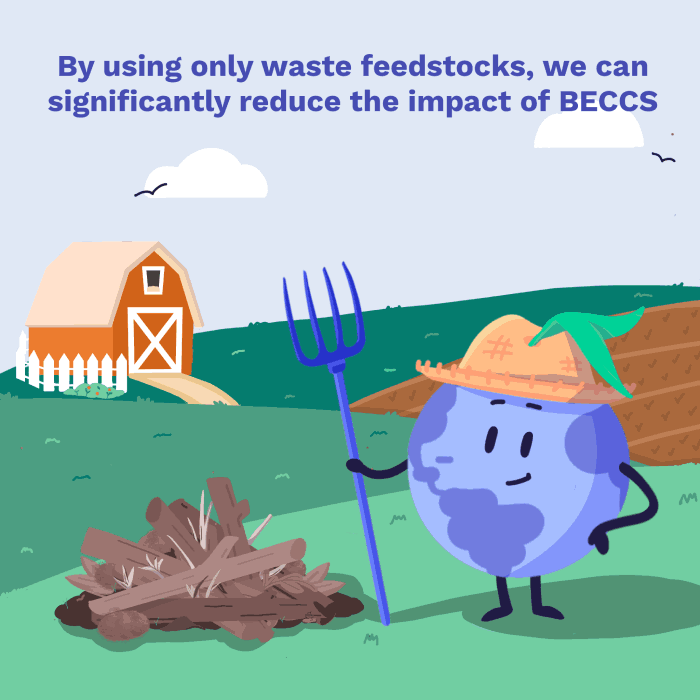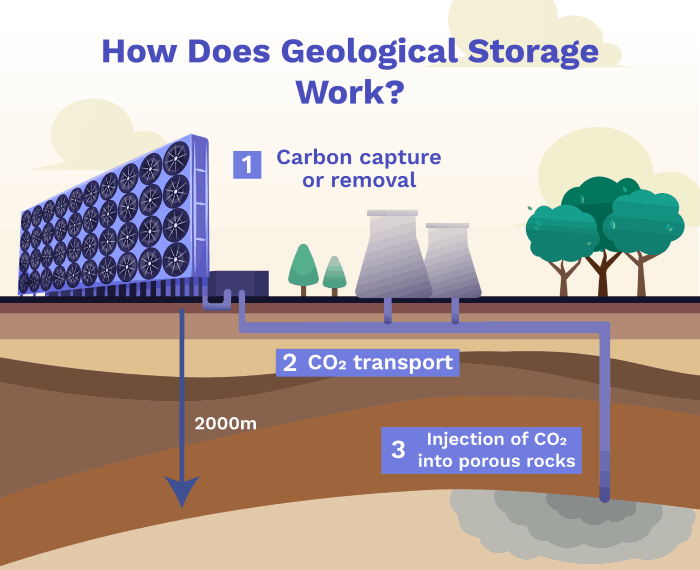Growing crops for biofuel could lead to more deforestation, resulting in habitat loss and carbon release from cut-down trees and disturbed soil 
 .
.
Growing crops for bioenergy has other environmental impacts too.
However, bioenergy can be made using waste materials, such as crop residues and food waste  . This reduces the land and resource requirements, as well as the cost.
. This reduces the land and resource requirements, as well as the cost. 
 .
.
So far, we have looked at how technology can enhance natural processes to remove CO₂. But what if we could use machines to remove it from the air directly?
How can we take CO₂ straight out of the air?
Direct air capture (DAC) involves using giant machines to remove CO₂ directly from the air using controlled chemical reactions  .
.
When air passes through these machines, the chemicals inside react with and remove CO₂, allowing the rest of the air to pass through unchanged 
 . These chemicals are called a “capture agent”, and the CO₂ must then be separated from them so they can be reused and the CO₂ can be stored
. These chemicals are called a “capture agent”, and the CO₂ must then be separated from them so they can be reused and the CO₂ can be stored  .
.
As far as we know, the main limit to how much CO₂ we can remove with DAC this century is the cost of the machines  ! Working out how to store the carbon, unexpected environmental side-effects, and some land requirements may also limit DAC, though it needs far less land than other methods of carbon removal
! Working out how to store the carbon, unexpected environmental side-effects, and some land requirements may also limit DAC, though it needs far less land than other methods of carbon removal .
.
What will we do with all of this captured CO₂?
In order to permanently remove CO₂ from the atmosphere, we need to store it somewhere where it will stay, ideally for thousands of years or longer, without causing problems.
Geological storage is a good option for storing carbon away for a long time . Geological storage involves pumping CO₂ into porous rocks underground (rocks with tiny holes that can contain liquids or gases)
. Geological storage involves pumping CO₂ into porous rocks underground (rocks with tiny holes that can contain liquids or gases) . CO₂ is compressed using very high pressures and then injected into the rock in this supercritical state (where it acts like both a liquid and a gas)
. CO₂ is compressed using very high pressures and then injected into the rock in this supercritical state (where it acts like both a liquid and a gas)
 .
.
After the CO₂ is injected into the rock, a lot of monitoring is needed to check that the CO₂ stays put . We know of about 2,000 GtCO₂ of storage capacity in geological formations today, and we will probably find more if we look harder
. We know of about 2,000 GtCO₂ of storage capacity in geological formations today, and we will probably find more if we look harder . We, therefore, won’t be running out of room to store our CO₂ anytime soon
. We, therefore, won’t be running out of room to store our CO₂ anytime soon .
.
Conclusion
Although they are usually more expensive than nature-based solutions, modern technologies could provide crucial extra carbon removal. However, as well as money, there needs to be widespread social acceptance of these technologies, and laws to limit any negative side-effects  .
.
There is also serious concern that, by focusing on taking CO₂ out of the atmosphere, carbon removal technologies distract us from working on actually reducing our carbon emissions  . To reach net-zero emissions, carbon removal and emissions reductions need to go hand in hand.
. To reach net-zero emissions, carbon removal and emissions reductions need to go hand in hand.
Go to quiz!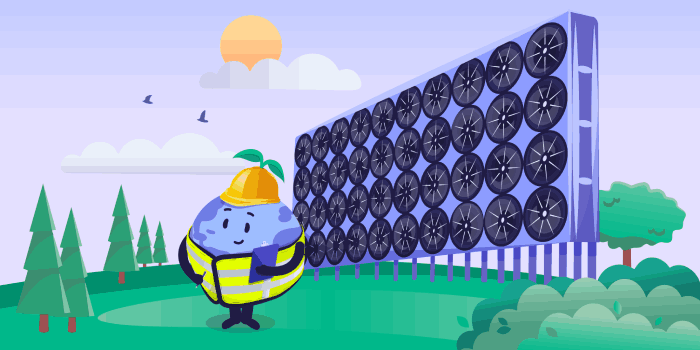
. When silicate rocks (such as volcanic or deep-earth rocks) are broken down, they react with CO₂ in the air to produce new minerals. These are then usually transported to the ocean by rivers
.
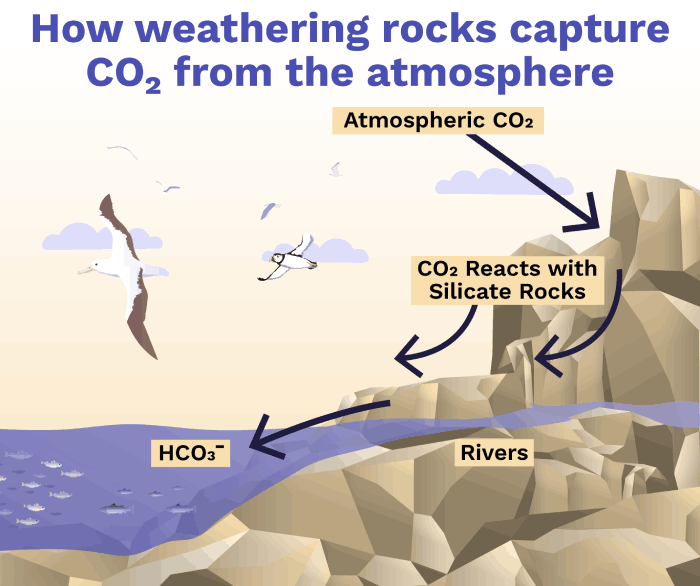
.
.
